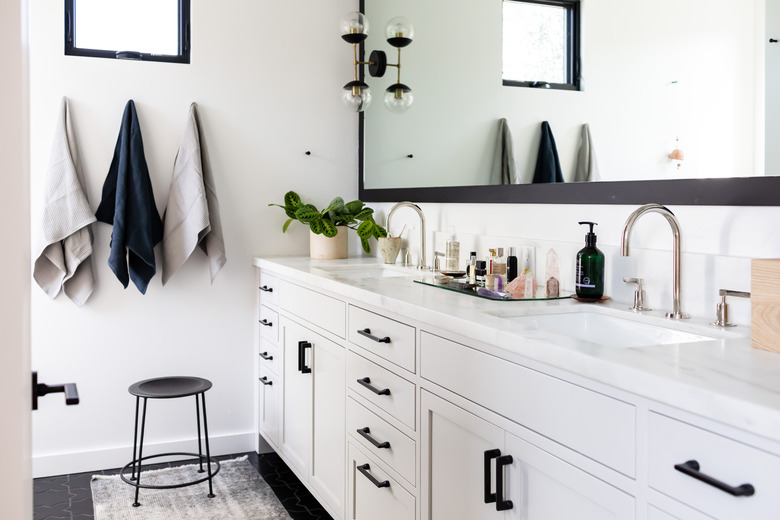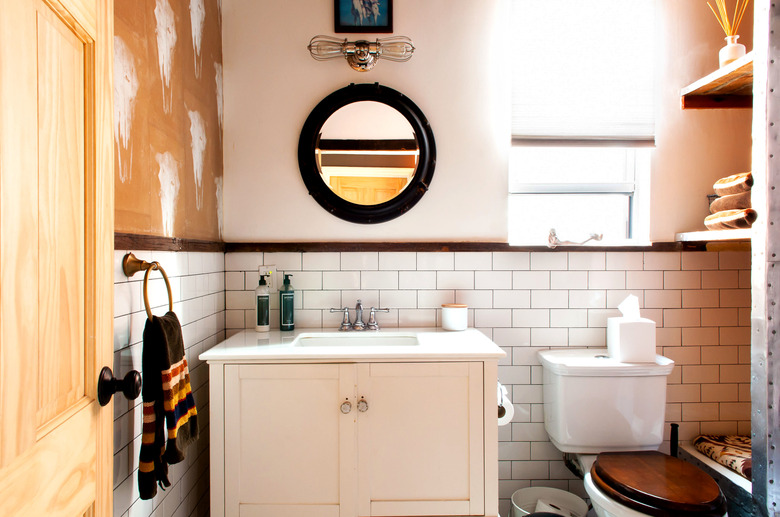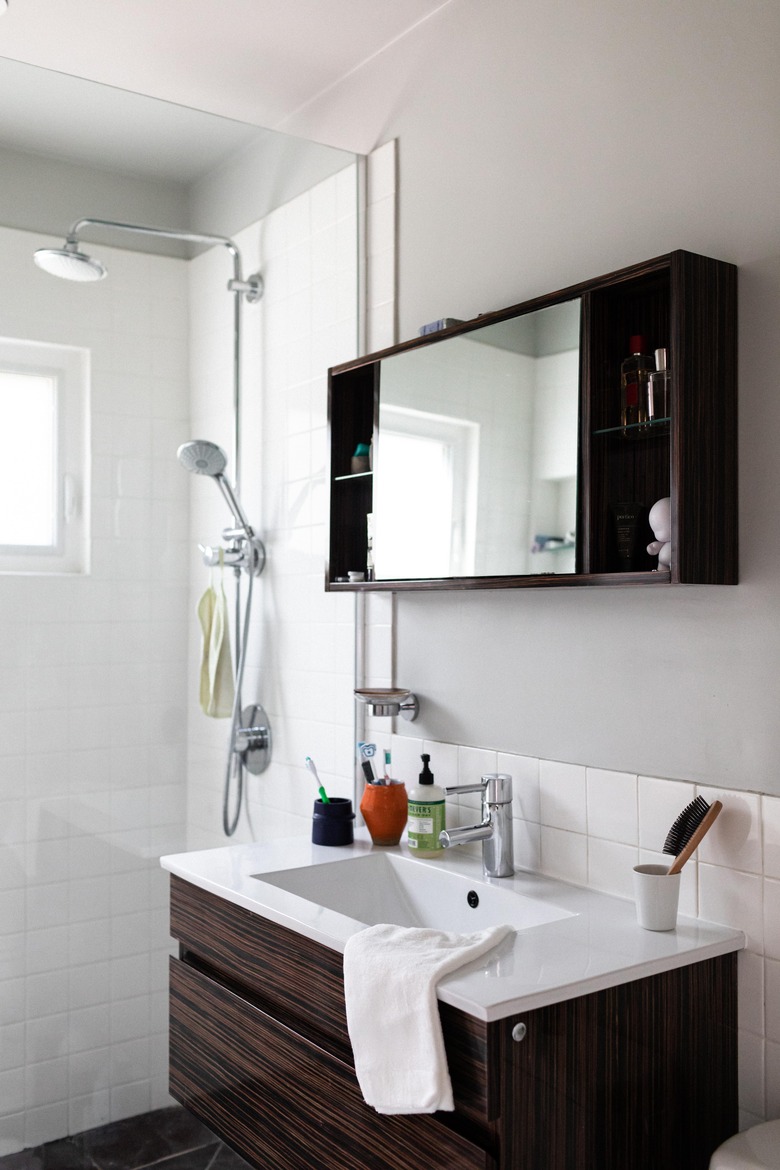Bathroom Vanity Sizes: A Homeowner's Guide
The size of the bathroom vanity sets the tone for the room and in many ways dictates how you'll use your bathroom space. Do you need extra storage or extra counter space to hold items? How will the sink you like determine the size of the vanity you choose? When it comes to bathroom vanities, size matters in many ways.
Standard Width and Height for Bathroom Vanities
Standard Width and Height for Bathroom Vanities
Standard bathroom vanities range from 24 to 72 inches wide while smaller vanity options usually come in 24-inch and 30-inch sizes. Vanities that range from 36 to 48 inches wide are considered midsize, but most single-sink designs are 24, 30, 36 and 48 inches wide. Vanities with double sinks are 60 inches wide or wider. However, you can choose a larger 60- or 72-inch vanity that has only one sink to give your bathroom extra counter space, according to Fine Homebuilding.
Typically, bathroom vanities have a large center cabinet that hides the pipes beneath the sink in addition to providing storage space. Wider bathroom vanities offer much more room for storage because they have one or more rows of drawers in addition to the center cabinet.
Most bathroom vanity designs are 31 or 32 inches high, which is standard counter height. Vanities marketed as "comfort size" are 36 inches high so you don't have to bend down as far to reach the sink. If you experience back pain from stooping over a lot, a 36-inch vanity may be the best choice for you. Taller people could also benefit from opting for a comfort size vanity. In addition to the comfort benefits of a taller vanity, you can also get a little extra storage space because it leaves more room for drawers and more vertical space under the sink.
Standard Depth for Bathroom Vanities
Standard Depth for Bathroom Vanities
Depth is an important consideration when it comes to bathroom vanity storage. Deeper drawers can hold more bathroom products, hair tools and toiletries—a big bonus for those with small bathrooms or limited storage. If you have no room to give up on vanity width or height, you can get extra storage space in the bathroom with vanity depth.
The standard depth for bathroom vanities is 21 inches. There are also vanities made in much shallower designs that are as small as 16 and 18 inches. If you have a narrow, galley-style bathroom, then a shallower vanity may be the best option.
If you need a nonstandard size due to an oddly shaped space or because none of the standard widths will quite fit the space you have, then you will need a custom-built or semicustom vanity. Any carpenter or business that offers custom cabinetry can make a custom vanity for the bathroom or possibly add on to an existing vanity to achieve the right size.
Bathroom Vanity Sizing Considerations
Bathroom Vanity Sizing Considerations
The size of your bathroom vanity and the size of the bathroom sink go hand in hand. If you choose a wide sink, you'll have less counter space. The style of sink could also make an impact: Vessel sinks are designed to sit on top of the counter rather than down inside it like an undermount sink or a drop-in sink. If you want a vessel sink, start with a shorter vanity because the sink will add 5 to 6 inches of height.
For sizing considerations, there isn't much difference between freestanding and wall-mounted vanities, which are two of the main types of bathroom vanity designs. Wall-mounted vanities don't go all the way to the floor, leaving open storage space beneath them. Freestanding vanities are the most common style and are much easier to install than wall-mounted designs because they aren't attached to the wall. Though they differ stylistically, these two vanity types are designed with industry standard height, depth and width measurements.
Corner vanities are available in small sizes because they're designed to sit in the corner and take up as little space as possible. However, corner vanities may be impractical depending on where your existing water and drain lines are already located and how far they have to be routed to reach a corner sink.
Don't forget to think about practical considerations like walking space and where your existing fixtures are located when considering the size and style of your bathroom vanity. You need to have space to get around the vanity and comfortably walk and stand in the room. You also want to have plenty of room to open the vanity cabinet doors and drawers.


